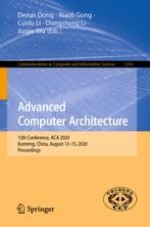This book constitutes the refereed proceedings of the 13th Conference on Advanced Computer Architecture, ACA 2020, held in Kunming, China, in August 2020. Due to the COVID-19 pandemic the conference was held online.
The 24 revised full papers presented were carefully reviewed and selected from 105 submissions. The papers of this volume are organized in topical sections on: interconnection network, router and network interface architecture; accelerator-based, application-specific and reconfigurable architecture; processor, memory, and storage systems architecture; model, simulation and evaluation of architecture; new trends of technologies and applications.
